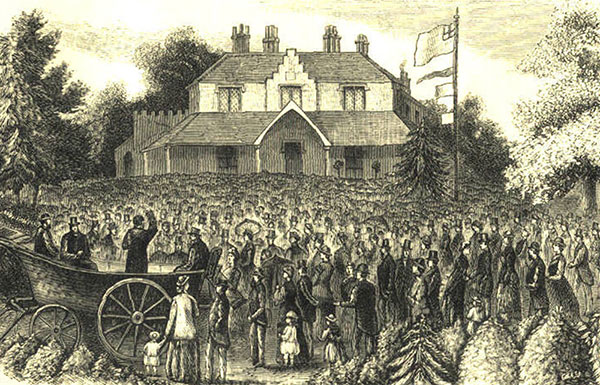
Highlights of the 1859 Welsh Revival
Amazing stories of revival in Wales:
The Welsh Revival of 1859 is something still talked about today. It is still being written about today. And it is still being marvelled at today. All Christians who love the Lord are still crying, “Do it again Lord.” They want to see the mighty works of God once more, and they long to see a powerful move of the Holy Spirit on our spiritually dead nations and our spiritually asleep churches.
Let me briefly look at just some of the highlights of this amazing move of God. Prayer of course was always a major part of all this:
The first movings of the Spirit at the Congregational church at Llangybi, Cardiganshire, were felt in a preaching service. Powerful convictions were felt by the congregation about half-way through the Sunday afternoon service of April 17th and many gave vent to their feelings in tears. As a result, prayer meetings were commenced, and were held in rotation in farms and dwelling houses in the locality. Soon the houses became too small, and many prayer meetings were held simultaneously in many parts of the area… Family worship, hymn-singing, Bible reading, church attendance and salvation soon became the leading topics of the day. Many were added to the church, and powerful impressions had been felt for some time… (Evans, pp. 33-34)
One recent writer summarises the place of prayer:
The revival of 1859 suggests that, in the divine providence, a spiritual revitalisation of communities took place as a result of prayer and Spirit-filled endeavour. The revival was prayed down, not worked up, as critics said. People did not, however, simply ‘say their prayers’. Times of prayer were seen as times of meeting and hearing from the almighty God who has ever been calling out to humanity: ‘Adam! Adam! Where are you?’ In the 1859 prayer meetings the heart of God was discovered for sinful mankind. God’s mind was revealed – and it was good news! Very good news for modern man! Awakened to the reality of God’s presence men and women communicated that news first, to their families and neighbours and took them along to the meetings being organised. Prayer helped bring about a climate of quiet expectancy and hopeful yearning. (Railton, p. 202)
One account of what transpired at the end of one church meeting is worth recalling here:
Before separating, our beloved minister administered the sacrament of the Lord’s supper—peculiar circumstances rendering it necessary that this should be done in our church-meetings. And in reading the Word of God, and making a few passing remarks thereon, an influence was felt by all present, which we had never experienced in the like manner before. There was a beauty, a loveliness about the Holy Word which we had never hitherto perceived. New light seemed to be thrown upon it. It electrified us and caused us to weep with joy. The feeling became general. All present were under its influence. The hardest hearts were forced to succumb. After some time we partook of the ordinance of the Lord’s Supper, but under strange emotions. And then we sang, ay, sang, with spirit, and repeated the hymn again and again—we could not leave off. Every heart seemed inspired to continue, and the last two lines were sung for full a quarter of an hour. Then the minister prayed, and such a prayer we had never before heard uttered. We felt that we were communing with God. Our hearts were truly poured out in praises and supplications. We could have prayed all night…. (Phillips, pp. 12-13)
Mention is often made of how rough and tough coal miners were impacted by the revival. Here is one account by a manager of a lead-mine:
I have been here eleven years. Almost all the miners used to be drunkards and Sabbath-breakers. They would come to their work on Monday with bruised faces and black eyes. The change is beyond anything I ever knew. I saw great revivals in Cornwall, but none to compare with the present awakening in these parts. They work here in companies of four, six, eight, twelve, and twenty. There is no company without its prayer-meeting underground before commencing work. They sing beautifully. On Saturday they gather together underground to render thanks for the mercies of the week. There is scarcely a house without its family altar. (Evans, pp. 96-97)
Another account of a lead mine said this:
Many prayer meetings were held underground at Frongoch Mine. Not an oath was heard within the confines of the mine. At the name of Jesus every knee bowed of ‘things under the earth’. One morning a prayer meeting was commenced as usual on reaching their work at six. Heaven penetrated into the pit and earth was forgotten. When the worshippers awoke from that sacred trance, they found it was two o’clock in the afternoon. (Evans, p. 56)
One account of the changes that were seen after revival had started says this:
A happy change is everywhere observed—our prayer-meetings are become crowded, and a powerful spirit of prayer has laid hold of the Churches . . . One of the most striking characteristics of this movement is its effects on young people, and even on children . . . The youth of our congregations are nearly all the subjects of deep religious impressions . . . Very young people, yea, children from ten to fourteen years of age, gather together to hold prayer-meetings and pray very fervently . . . We have never seen such an outburst of feeling as . . . in many that have recently been brought under religious impressions . . . Some, after sustaining a severe struggle with their heart-convictions for many days and nights without sleep and without rest, happily at last find peace in Christ to their weary souls and resolve henceforth to live in Christ and to Him. (Evans, p. 74)


Another present-day writer also speaks of the impact revivals had on children:
There are a number of examples of revival in schools within Ulster. . . . In each case there was a spontaneous revival movement among children. In Ballymena, a schoolboy felt a strong sense of conviction about his sin. His distress was noticed by his teacher, who suggested that another boy in the class should accompany him home. On the way out of the school the two boys started to pray and then felt that they should go back and speak to the class as a whole. The classmates, who might have been expected to ridicule this episode, were impressed and a spontaneous prayer meeting began. Adults in the neighbourhood came to investigate. The spiritual power in these unexpected prayer meetings conducted by young people in turn affected the adults.” (Randall, pp. 79-80)
One person who witnessed events in North Wales said this in part:
I have never witnessed anything like that which I now see daily. You hear of nothing but the revival. Ungodly people quake and tremble. Those who offer themselves as candidates for church-fellowship weep and mourn, as though the world were at an end. I have seen a large congregation in this neighborhood, containing at the time many scores of hardened ungodly people, bathed in tears, and as incapable of leaving the place at the close of the public service as if their feet had been nailed to the floor of the chapel. I saw an aged man attempting it, but he failed and sat down again. Some of the most ungodly men seemed to be entirely bewildered; they could hardly find their way home that night. Blessed be God! Many of them found their way to the blood of the Cross. I thank God I have lived to see the year 1859. God in His grace, has done more within the past two weeks in this part of the country than had been accomplished for an age previously. (Phillips, p. 60)
The revival of course spread far and wide. Says one recent writer:
By early 1860, in a ‘Revival Sermon’, C.H. Spurgeon spoke about the way in which — as he saw it — a new spiritual impetus was by then evident across the major denominations in England. United prayer was linked to action. He spoke of the ‘life’ and ‘vigour’ being experienced:
“Everybody seems to have a mission and everybody is doing it. There may be a great many sluggards, but they do not come across my path now. I used to be always kicking at them, and always being kicked for doing so. But now there is nothing to kick at — every one is at work — Church of England, Independents, Methodists, and Baptists.”
Significantly, Spurgeon was looking for more, hoping that through ‘God’s ploughmen and vine dressers’ there would be further power — ‘that God will bless us, and that right early’. (Randall p. 21)
And new methods were often made use of as well:
Periods of revival have often produced new forms of outreach, and events in London offer a good example. As well as involvement in church planting, other ways were found through which – as Edwin Orr puts it – ‘awakened Christians in London soon found an opportunity of harnessing the flowing tides of Revival’. One new initiative in the 1860s that Orr discusses was the use of theatres for evangelistic meetings. The Earl of Shaftesbury, the most prominent evangelical social reformer in the nineteenth century, was at the forefront of this new development. In 1855, Shaftesbury had sponsored a Religious Worship Act to allow services involving Anglicans to take place in ‘unconsecrated’ buildings. There was opposition from High Church Anglicans, but an ecclesiastical compromise was reached, and on New Year’s Day 1860 the Britannia Garrick and Sadler’s Wells theatres were used for the first time as venues for Sunday evening services, attracting huge audiences. By February 1860 seven theatres in London were serving as preaching centres, with both Anglican clergymen and Nonconformist ministers preaching. A total of twenty thousand people attended these new forms of service. (Randall, pp. 109-110)
And it is significant how ordinary men and women, boys and girls, were the main movers and shakers throughout:
While David Morgan was extensively used, the revival of 1859 cannot be equated with, nor confined to, the limits of his influence and work.
“The individuals who have been chiefly instrumental in the commencement and spread of the work amongst the various sections of the Christian Church, and throughout the various counties, have been men more distinguished for their piety, zeal, love for God, and compassion for souls, than for high attainments and intellectual powers . . . the absence of great names, while at the same time a great and mighty spiritual work has been done, will the more effectually secure the glory to Him who alone gives the increase.”
So testifies Thomas Phillips, and J. Edwin Orr draws upon The Revival for a parallel statement, to the effect that “the Welsh Revival of 1859 was independent of great personalities”. (Evans, p. 44)
Lastly, and as to numbers, here is one summary statement:
About 110,000 were converted and added to the churches as a result of the 1859 revival in Wales. The Calvinistic Methodist and Congregational churches each received about 36,000 new members; the Baptists about 14,000; the Wesleyans about 5,000, and the Established church about 20,000. (Evans, p. 97)
For further reading on the Welsh Revival of 1859
Evans, Eifion, Revival Comes to Wales: The Story of the 1859 Revival in Wales. Evangelical Press of Wales, 1959, 1995.
Paisley, Ian, The 59 Revival. Martyr’s Memorial Free Presbyterian Church, 1958.
Phillips, Thomas, The Welsh Revival. Banner of Truth Trust, 1860, 1989.
Railton, Nicholas, Revival on the Causeway Coast: The 1859 Revival in and around Coleraine. Christian Focus, 2009.
Randall, Ian, Rhythms of Revival: The Spiritual Awakening of 1857-1863. Authentic Media, 2010.
My companion piece on the 1904-1905 Welsh Revival is found here: https://billmuehlenberg.com/2023/09/08/highlights-of-the-1904-1905-welsh-revival/
[1983 words]
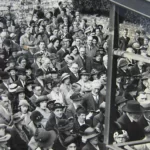


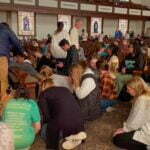
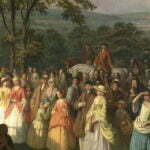
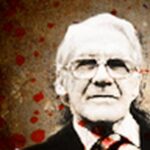
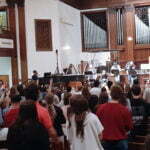




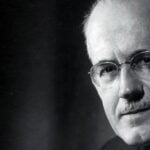
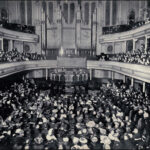




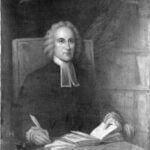
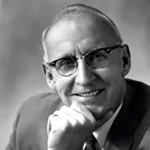

If only Bill !!!
We can pray to that end Rick.
That’s funny – I was only talking about the Welsh revival in school scripture today (Yeah we can do that in NSW). I ended up there from the topic of convicts being sent to Australia because the English jails (gaols) were full. “In the Welsh metropolis, the Cardiff police reported a 60% decrease in drunkenness and 40% fewer people in jail at the New Year.” … A quote from a guy called Bill Muelly-something…
It’s interesting to get kids thinking about what the world would be like if everyone was a real Christian. No keys, no passwords, no security, police would just help a few people in trouble, no drugs, no alcoholism, no abuse… A bit like when I was working at the Creation Museum and tools could just stay in the open workshop every day. When we got close to the opening we had to quickly hire more workers and lo and behold – tools started to go missing… Oh yeah, that’s right, these are normal people…
Thanks Tim.
Yes, Tim. Britain presently has the largest prison population in Europe. The government claims it is progressive and forward thinking by boasting of building even more.